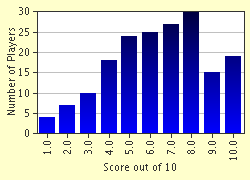Quiz Answer Key and Fun Facts
1. Prehistoric Megalodon was the largest predator that ever lived, dwarfing its modern relative, the great white shark. If you could place a fully grown Megalodon upright on its nose, it would be as tall as what?
2. What does "Megalodon" mean?
3. Megalodon's main prey was Odobenocetops, which was what sort of creature?
4. Megalodon had to eat at least 2 percent of its 20 ton body weight, or half a ton, daily to maintain its existence. This is proportionately a bit less than a human being eats. Why do humans eat more than sharks?
5. What creatures were Megalodon's predators?
6. Megalodon appeared in prehistoric oceans during the Oligocene Period and ruled the oceans for 20 million years. It became extinct 2 million years ago, due to what phenomenon?
7. Only fossilised Megalodon jaws and teeth have been found - never any Megalodon skeletons. Why not?
8. Marine "treasure hunters" are always eager to find fossilised Megalodon teeth, as there is a ready market for them. Who are the eager purchasers?
9. What colour are fossilised Megalodon teeth?
10. How were megalodon's teeth arranged?
Source: Author
annamc
This quiz was reviewed by FunTrivia editor
crisw before going online.
Any errors found in FunTrivia content are routinely corrected through our feedback system.


